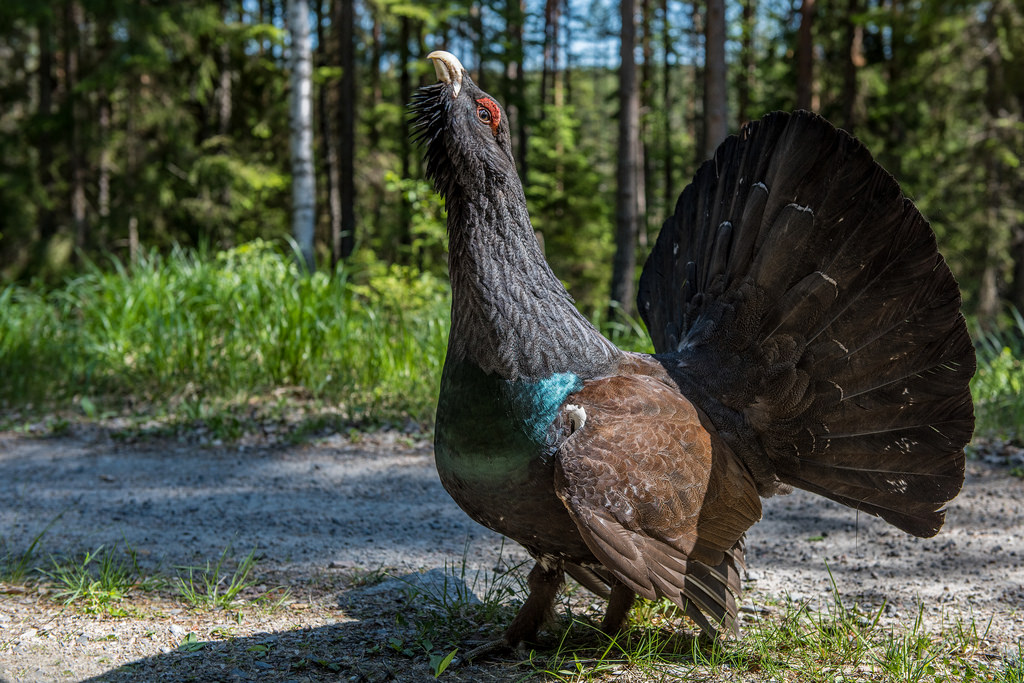
Tim writes: I haven’t seen a great many Capercaillies, and most of my sightings have been fleeting glimpses of birds disappearing into the forest. But this Capercaillie was different. This was one of those so-called rogue male Capercaillies that was pumped full of testosterone and ready for a fight. I had to get down low to get this point of view, and as soon as I was lower than the bird he took his advantage and attacked me. He clawed and pecked and clattered me with his wings, but it was still one of my most exciting and memorable wildlife experiences ever.
The name is a corruption of the Gaelic “capull coille” which translates as horse of the woods. The horse part comes from its display call which with a series of slowly accelerating mechanical tickup notes followed by a sound a bit like the whinneying of a horse, climaxed with a pop like a champagne cork going off. It became extinct in Scotland as a truly native species during the seventeenth century but was successfuly reintroduced into Caledonian pine forests in 1830. British authors did not like the gaelic name so most early works call it Wood Grouse, But after its reintroduction the gaelic name Capercaillie (or Capercailzie- z is pronounced y) was adopted. I photographed this male in Sweden.
[registration_form]
All of the guidance in the UK for rogue capercaillie is that disturbing them like this puts considerable stresses on the bird and puts them at risk. It’s illegal to photograph these birds in this country without a licence.
Even if taking photographs like this is legal in Sweden, sharing them on social media in the UK will encourage other photographers to go out and do the same thing in Scotland, putting endangered birds at more risk. It feels highly irresponsible to me.
liam – thank you for your comment – I’m sure Tim will respond when he gets a moment.
We were parked on a forest track and the bird appeared about 150 metres away and moved towards us. At no point did we approach or crowd the bird and we stayed with it for less than five minutes. He was pecking his own reflection in the side of the car when we were inside ready to drive off. We had to move away slowly for fear of it walking under the wheels. Any bird that is fighting with another bird will be stressed, but that is what they do, and it is natural. But any stresses of a bird attacking humans will be less, because we were not fighting back like another Capercaillie would. I cannot see how this puts the bird at risk. I have looked on line and I see that one rogue male was killed by a dog in Scotland in 2012 but that had nothing to do with birdwatchers or photographers. It is worth remembering that people still shoot Capercaillies in Sweden (It is legal to shoot them in Scotland but there is a voluntary moratorium).
It is not illegal to photograph Capercaillies in Britain, apart from females on the nest or with dependent young (they are listed on Schedule 1 of the Wildlife and Countryside Act). Although it would be an offence to recklessly disturb Capercaillies inside a SSSI if they are part of the special qualifying interest of that SSSI.